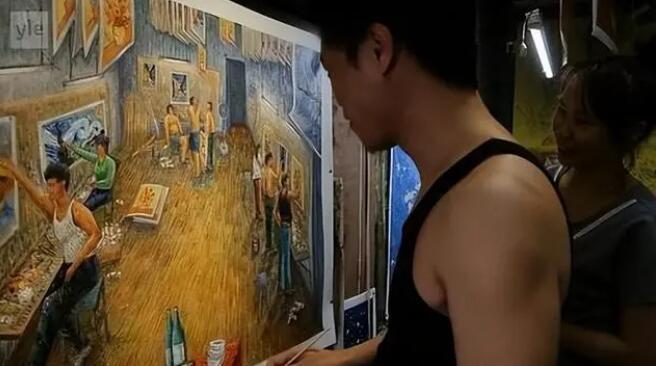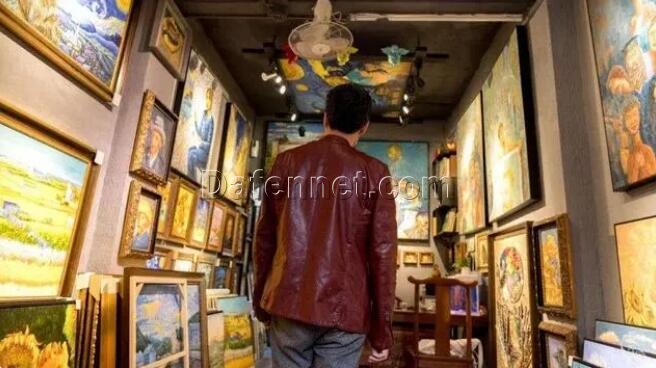Dafen oil painting Village
From Imitation to Inspiration: Zhao Xiaoyong’s Journey from Dafen Village Painter to Renowned Artist
In November 2016, a documentary titled “China’s Van Gogh” premiered at the Amsterdam International Documentary Film Festival. It introduced the world to Zhao Xiaoyong, a man as ordinary in appearance as his common name suggests. Zhao was just another painter among many in Dafen Village, Shenzhen, known for replicating Van Gogh’s paintings to make a living. But there was something uniquely captivating about his story that merited a closer look through the lens of a documentary filmmaker.
Why would someone choose to document the life of an individual who spends his days imitating the works of Van Gogh? Zhao Xiaoyong’s journey from a mere replicator to a respected artist tells us why. He started as an unknown in the art industry, initially unnoticed and uncommissioned. Yet, Zhao’s skill and dedication soon saw him receiving steady orders from abroad, making him one of the most successful painters in Dafen Village.
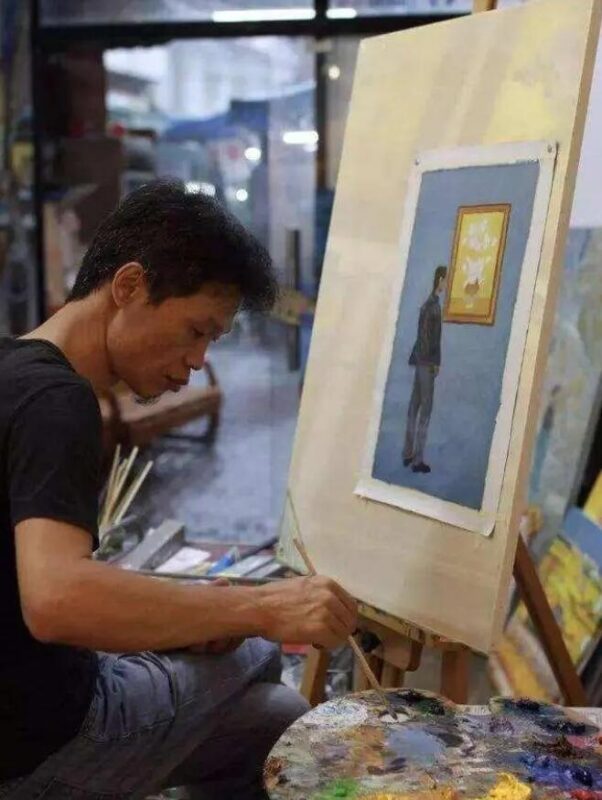
The beauty of Zhao’s tale lies not in his ability to mimic Van Gogh’s strokes but in his personal transformation. Positioned at the lowest end of the art industrial chain, Zhao never lost sight of the “starry night” above him. Despite his humble role as a high-fidelity replicator, he aspired towards something greater, achieving a stunning metamorphosis from laborer to true artist.
Born in 1972 into a peasant family in Shaoyang, Hunan, Zhao faced a harsh reality early on. With his father deceased and his mother unable to shoulder the family burdens alone, Zhao was forced to quit school at a young age—a decision that haunted him throughout his life. As his own children reached school age, memories of those difficult days, including his uncle’s reproaches and his mother’s helpless admission of poverty, still brought tears to his eyes.
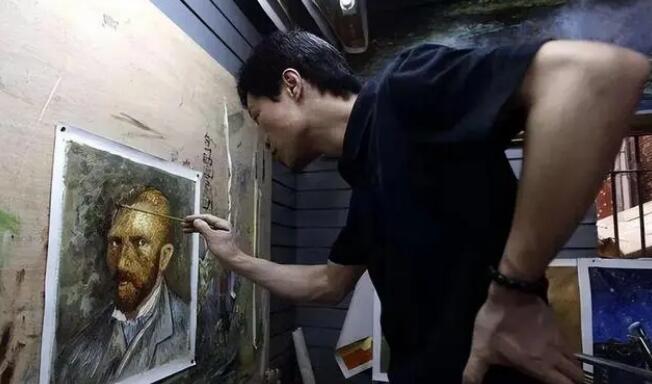
At the tender age of fifteen, Zhao left his beloved school behind and moved to Shenzhen in search of work. His youthful appearance and small stature made it almost a fantasy to find stable employment. Enduring unimaginable hardships, from hunger to homelessness, Zhao’s fortunes finally turned when he landed a job that aligned with his early passion for painting.
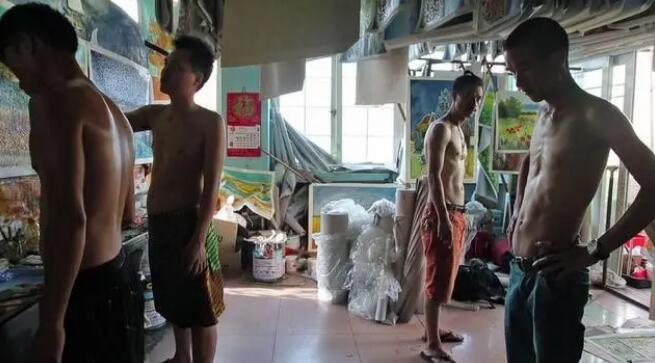
Working initially in a wicker basket factory, Zhao’s task was to outline and color designs on resin—a job he landed almost out of luck but grew to excel in. However, a phone call from a fellow villager working in Dafen would change his life forever. Promised better pay and less physical labor, Zhao was enticed to join the burgeoning industry of art replication in Dafen.
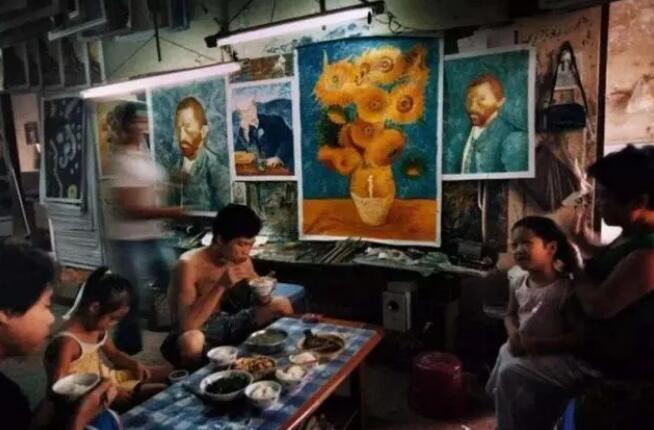
Despite the village’s unpleasant nickname and squalid conditions, Zhao had no choice but to stay and adapt. Tasked with replicating famous artworks based on orders, Dafen Village had developed a sophisticated industry around art replication. Since the late 1980s, when a Hong Kong businessman trained the first group of painters, Dafen had become synonymous with oil painting, supplying over eighty percent of the world’s oil paintings at one point.
Zhao, like many others, took up the brush simply to make ends meet. They worked tirelessly, their lives disconnected from the art they produced—until Zhao took a transformative trip to Europe. Confronted by the originals of the paintings he had replicated for years, Zhao experienced an epiphany. The vividness and passion emanating from Van Gogh’s originals were unlike anything Zhao had been able to capture. The profound disparity between the originals and his replicas sparked a desire in Zhao to go beyond imitation.
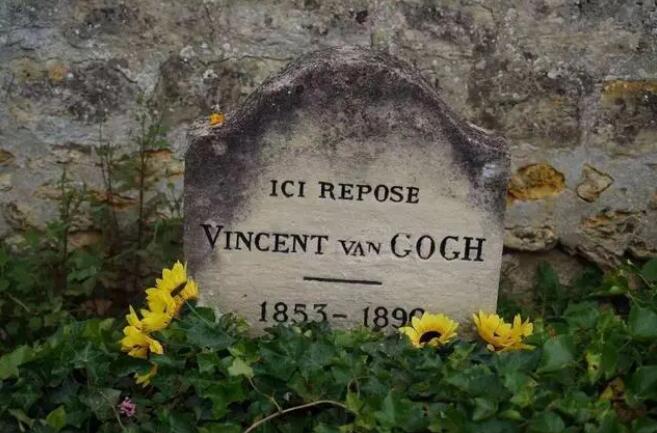
Returning to Dafen, changed by his experiences, Zhao decided to forge a new path. He resolved to paint not as Van Gogh, but as Zhao Xiaoyong. Embracing the challenging road of original creation, Zhao began to craft works that reflected his own perceptions and emotions. His commitment to originality slowly garnered recognition, transforming him from a skilled replicator to a genuine artist.
Zhao’s journey highlights the profound realization that while imitation might secure a livelihood, true artistry lies in original creation. As his story reached a wider audience through the documentary, Zhao Xiaoyong’s life took on new meaning, proving that it’s never too late to embrace one’s passion and light up the world with unique artistic expressions, just as Van Gogh once did. His life, now dedicated to his own art, is just beginning to unfold—a testament to the enduring spirit of creativity.
